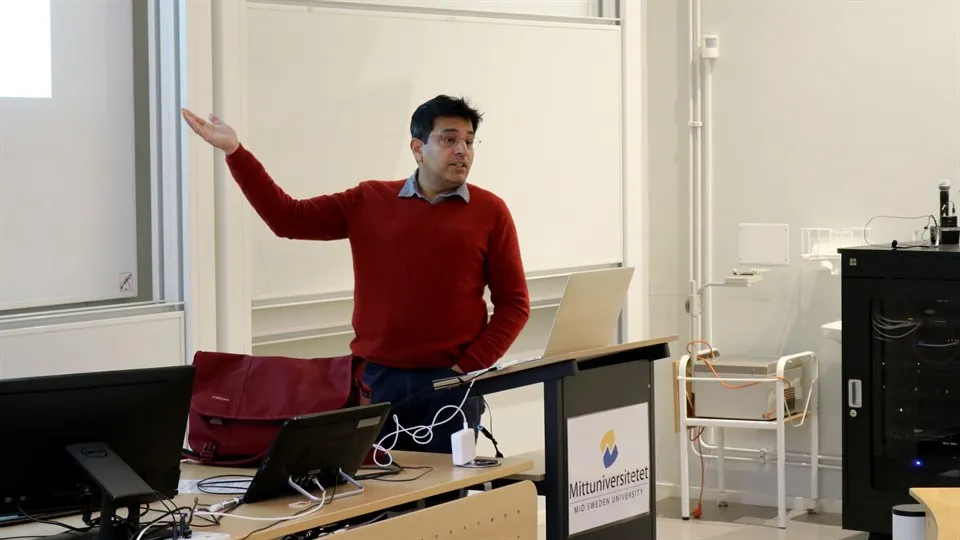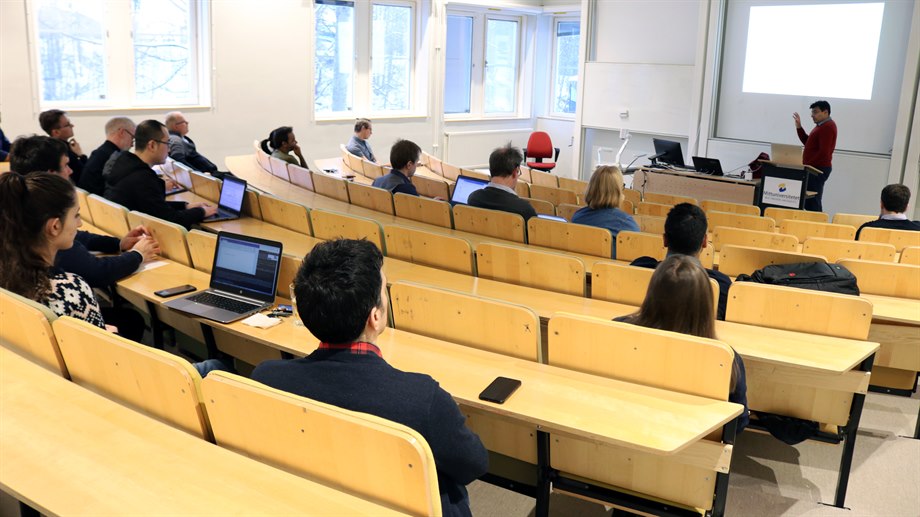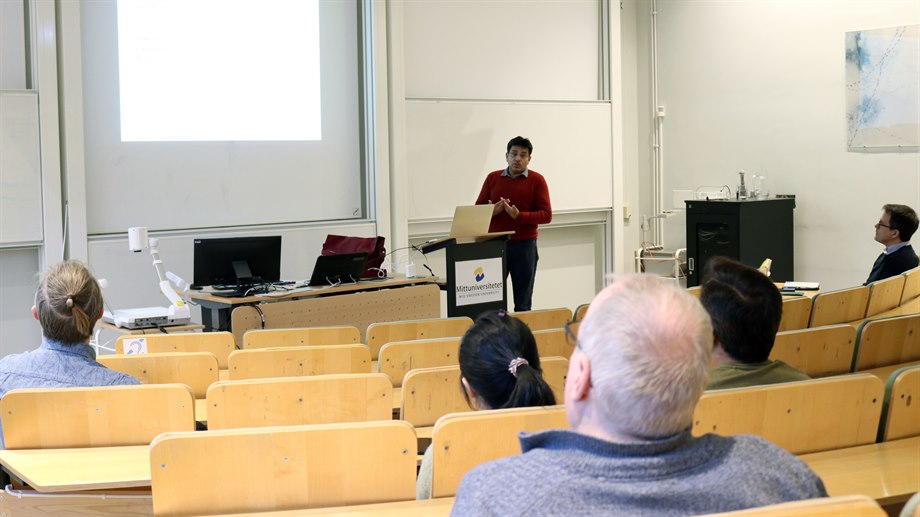av
International guest lecture in deep learning
Last week, STC got an international visit by Prof. Faisal Qureshi from the University of Ontario Institute of Technology. At his visit in Sundsvall he held two open lectures on Deep Learning for the researchers at STC.
About Prof. Qureshi
Faisal Qureshi is an Associate Professor of Computer Science at University of Ontario Institute of Technology (OntarioTechU), where he directs the visual computing lab. He holds a Ph.D. and an M.Sc. in Computer Science from the University of Toronto, Canada, an M.Sc. in Electronics from Quaid-e-Azam University, Pakistan, and a B.Sc. in Mathematics and Physics from Punjab University, Pakistan. He joined OntarioTechU in 2008 from Autodesk Canada Co., Toronto. Dr. Qureshi's research interests center around computer vision, camera networks, and video summarization. He is a recipient of Computer Robot Vision (CRV) 2017 Best Vision Paper award and ACM/IEEE International Conference on Distributed Smart Cameras 2007 Outstanding Paper award. Dr. Qureshi is also active in journal special issues and conference organizations, serving as the general co-chair for the Workshop on Camera Networks and Wide-Area Scene Analysis (co-located with CVPR) in 2011-13. In addition he served as the co-chair of CRV 2015/16. He is a senior member of the IEEE, a member of the ACM, and a member of CIPPRS.
Deep learning meets computer vision
In recent years computer vision has seen a seismic shift from classical statistical methods to deep learning. In this talk I will introduce deep learning and showcase some of its successes at many computer vision tasks. I will start with basic line fitting and use our understanding of it to construct more complex Artificial Neural Networks (ANNs) models. I will then discuss convolutional neural networks and see how these have rendered hand-crafted features of old, e.g., SIFT, redundant. I will conclude this talk with some recent applications of deep learning to long-standing computer vision problems.
A tale of two (deep) architectures: computational attention and structured generative adversarial networks
I will summarize two recent projects in our lab that explore new deep learning architectures for computer vision problems.
Starting by presenting an architecture that learns to sequentially attend to different Convolutional Neural Networks (CNN) layers (i.e., “what” feature abstraction to attend to) and different spatial locations of the selected feature map (i.e., “where”) to perform the task at hand. Specifically, at each Recurrent Neural Network step, both a CNN layer and localized spatial region within it are selected for further processing. The approach is tested on two computer vision tasks: (i) image-based six degrees of freedom camera pose regression and (ii) indoor scene classification. Empirically, combining the “what” and “where” aspects of attention improves network performance on both tasks.
Second, I will present a two-stage model that separates the image inpainting problem into structure prediction and image completion. Similar to sketch art, our model first predicts the image structure of the missing region in the form of edge maps. Predicted edge maps are passed to the second stage to guide the inpainting process. This approach outperforms current state-of-the-art techniques quantitatively and qualitatively.


